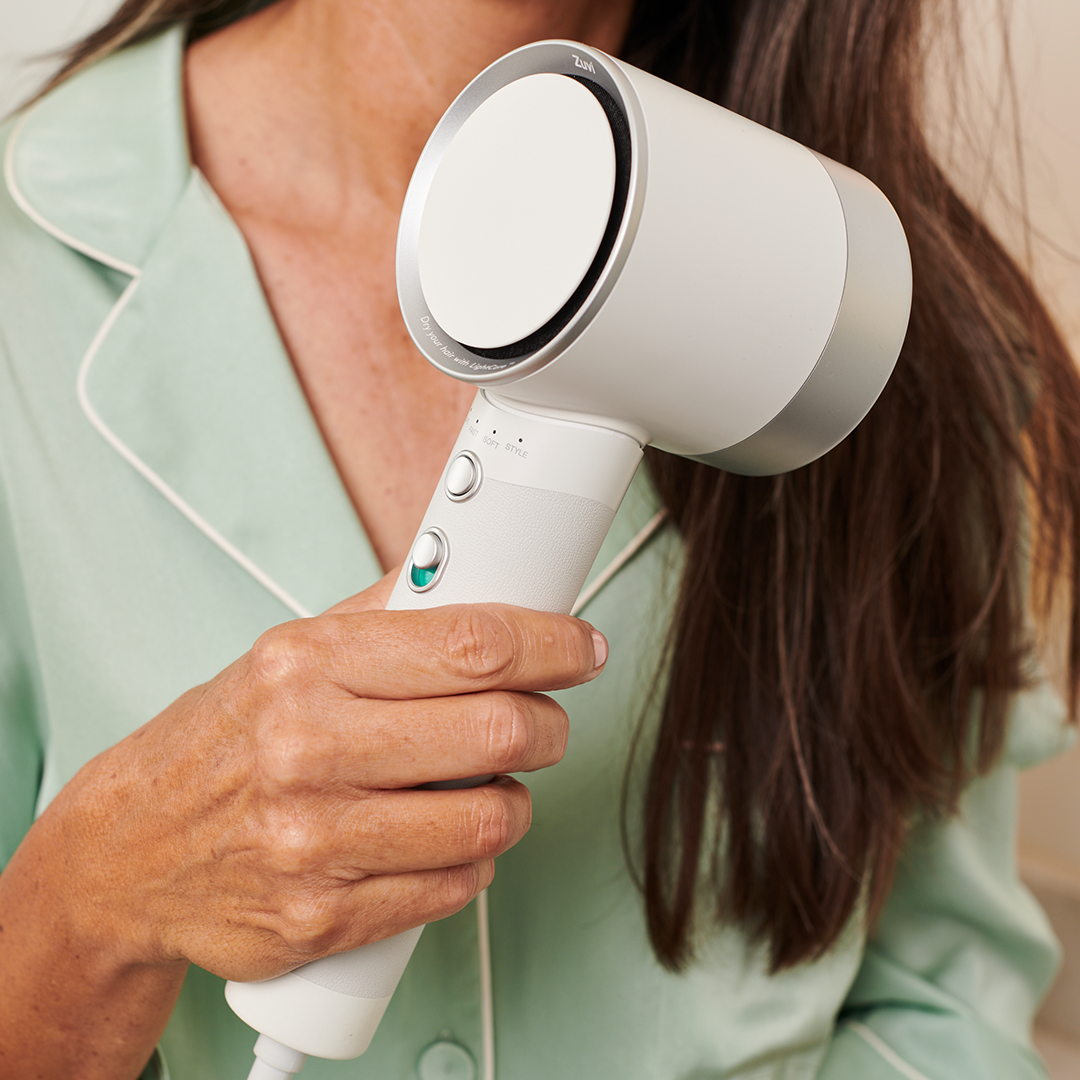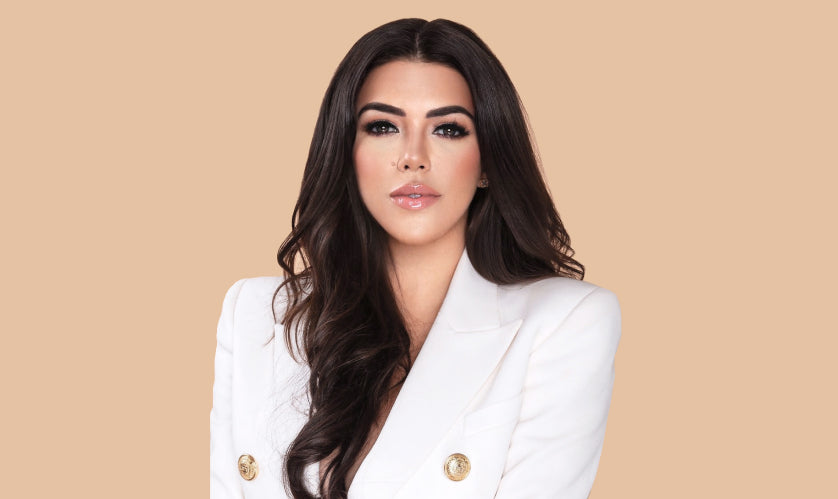Hair dryers are a staple in most households, but the energy they consume and the emissions they produce can significantly impact the environment. In this article we will discuss how you can switch to a more sustainable hair dryer like the Zuvi Halo and reduce your carbon footprint.
Why Consider Sustainable Hair Dryers?
Hair dryers consume a lot of energy and produce a lot of greenhouse gases. A typical hair dryer emits around 100 kilograms of carbon dioxide per year. This may not seem like a lot, but it quickly adds up when you consider the number of people who use hair dryers daily. With the Zuvi Halo, we created the first hair dryer to use light instead of heat, drastically reducing the energy needed to dry hair and carbon emissions. Switching to a more sustainable hair dryer can help reduce your carbon footprint and contribute to a more sustainable future.
Types of Sustainable Hair Dryers
When it comes to sustainable hair dryers, the market offers a diverse range of options worth exploring. By understanding these different types, you can make an informed choice that aligns with your eco-conscious values and goals.
LightCare™ Hair Dryer
Zuvi Halo is the first and only hair dryer powered by our patented LightCare™ technology. It is an excellent option for those looking for a sustainable hair dryer that uses an efficient combination of beneficial infrared light and low heat to dry their hair. This nature-inspired technology mimics the energy from the sun and wind to produce cooler air, making them an excellent alternative to traditional hair dryers that rely on high heat that causes hair damage.

The Zuvi Halo Hair Dryer
Solar-Powered Hair Dryers
In our quest for eco-friendly solutions, solar-powered hair dryers emerge as a shining example of sustainable technology. Harnessing the limitless power of the sun, these hair dryers are a stellar option for those seeking an environmentally-conscious choice. Unlike conventional hair dryers that heavily rely on electricity, solar-powered ones utilize the sun's energy to fuel their motors.
They also prove to be incredibly versatile for outdoor use, making them a go-to companion for camping trips, outdoor events, and other off-grid adventures. Embracing these innovative hair dryers not only reduces our carbon footprint but also allows us to experience the convenience of modern technology in harmony with nature.
Energy-Efficient Electric Hair Dryers
Eco-friendly electric hair dryers, such as the Zuvi Halo, are another excellent option for those looking for a more sustainable hair dryer. These hair dryers use less energy than traditional hair dryers and produce fewer emissions. When considering eco-friendly hair dryers, it's essential to focus on their wattage, which provides a reliable indication of their power consumption. For instance, the Zuvi Halo boasts an impressively low wattage of only 680w, whereas traditional hair dryers typically have 1700w. Nevertheless, it's crucial to conduct further research on their performance as a lower wattage may potentially impact efficiency if not optimized properly.
Tips for Using Sustainable Hair Dryers
Having explored the fundamentals of eco-friendly hair dryers, it's time to delve into optimizing their usage for maximum efficiency. Let's discover the essential practices to ensure we make the most of our eco-friendly hair dryers and contribute to a greener future.
Use the Lowest Heat Setting Possible
Using the lowest heat setting on your sustainable hair dryer is not just a clever idea – it's a powerful way to make a real impact on energy conservation and emissions reduction. When you opt for the lower heat setting, you're not only being kinder to your hair but also being kinder to the planet.
Here's how it works: Hair dryers typically have multiple heat settings, ranging from low to high. By choosing the lowest heat option, you significantly decrease the amount of energy the hair dryer consumes during each use. This might seem like a small change, but when multiplied by the countless hair dryers being used worldwide, the collective energy savings can be substantial.
The lower heat setting also means a decrease in energy demand, which ultimately translates into a reduction in greenhouse gas emissions. This is because many countries still heavily rely on fossil fuels like coal and natural gas to generate electricity. By using less energy, you indirectly help reduce the need for such polluting energy sources, contributing to cleaner air and a healthier environment.
Aside from the environmental benefits, using the lowest heat setting is also beneficial for your hair's health. High heat can damage hair follicles, leading to dryness, breakage, and split ends. By opting for gentler heat, you can maintain the lusciousness and natural shine of your hair while reducing the risk of heat-induced damage.
Unplug Your Hair Dryer When Not in Use
Unplugging your hair dryer when it's not in use may seem like a small action, but it can have a significant impact on conserving energy and reducing emissions. When your hair dryer is plugged in, even if it's turned off, it still draws what is known as "standby power" or "phantom load." This means it continues to consume electricity, albeit at a lower level, while waiting for you to switch it on again.
By unplugging your hair dryer after each use, you prevent this standby power consumption, effectively cutting off any unnecessary energy drain. This might not only lead to a noticeable decrease in your electricity bills but also plays a vital role in minimizing your environmental footprint.
Beyond the immediate benefits of saving energy and reducing emissions, adopting this simple habit fosters a mindset of mindfulness towards energy consumption. It encourages us to become more aware of our daily routines and the impact our actions have on the planet.
Keep Your Hair Dryer in Top Shape
Keeping your hair dryer in tip-top shape is not just about preserving its longevity, but also about maximizing its efficiency and reducing energy waste. Regular maintenance practices are key to ensuring your hair dryer operates at its best, so let's dive into the essential steps.
Firstly, cleaning the filters regularly is crucial. As you use your hair dryer, dust, lint, and hair particles can accumulate in the filters, obstructing the airflow. A clogged filter not only hinders the drying process but also forces the hair dryer to work harder, consuming more energy in the process. By cleaning the filters frequently, you enable smooth airflow and prevent unnecessary energy consumption.
Secondly, pay attention to the exterior of your hair dryer. Wipe it down regularly to remove any dust or residue that might have accumulated. A clean exterior allows for better heat dissipation, reducing the risk of overheating and improving overall performance.
Additionally, check for any loose or damaged parts. Loose components can lead to inefficiencies and increased energy consumption. If you notice any issues, it's essential to get them repaired promptly, ensuring your hair dryer functions optimally.
Furthermore, examine the power cord and plug for any signs of wear or damage. A frayed cord not only poses a safety hazard but can also impact the electrical flow and performance. If you detect any damage, it's essential to replace the cord or the entire hair dryer to maintain safety and energy efficiency.
Lastly, store your hair dryer properly when not in use. Keep it in a dry and clean location to avoid exposure to moisture and dust. Storing it correctly not only prolongs its life but also maintains its performance, reducing the need for premature replacements.
In Summary
In conclusion, sustainable hair dryers are an excellent option for those who want healthier hair and want to reduce their carbon footprint and contribute to a more sustainable future. Choosing a more eco-friendly hair dryer like Zuvi Halo can help reduce emissions, conserve energy, and give you the hair you can love again.





Leave a comment
All comments are moderated before being published.
This site is protected by hCaptcha and the hCaptcha Privacy Policy and Terms of Service apply.